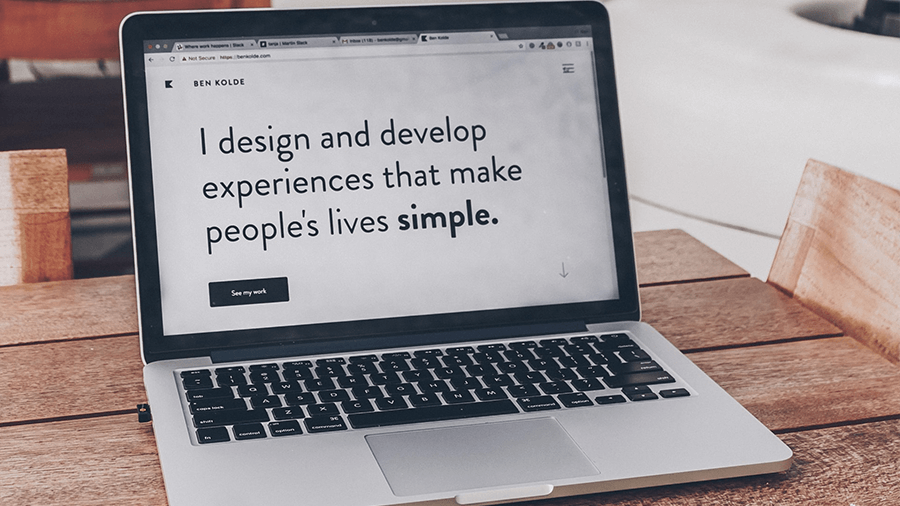
If you’re looking for top tips to create a UX portfolio. Pursuing a career as a junior UX (user experience) designer?
Your first step—before going on interviews and even before searching for a job in UX—is to create a winning UX portfolio.
Here’s what you need to know to create a beginner UX designer portfolio that doesn’t look amateurish and will blow prospective employers away.
Why Create a UX Portfolio?

Besides showing your abilities, your portfolio will communicate your design point of view.
While a lot of what you do as a UX designer isn’t visual, you will need to create a portfolio that visually showcases the experiences you’ve designed. This is because most employers combine (confuse?) UX with UI and are looking for a candidate who can do both. You may consider yourself primarily a UX designer, but it doesn’t hurt to have and showcase UI design skills in your portfolio. It can give you the edge over other junior UX designer candidates.
Case studies are another difficult requirement for junior UX designers.
Many employers want to see real-life case studies of your UX design in action, but what if you don’t have any real-life experience?
It’s frustrating and down-right confusing.
But we’re here to help you sort through all of that. Here’s how to create your first UX design portfolio.
1. Curate (or Create) Projects
Do you have at least 5 design projects? Your UX portfolio should contain at least 5 different design projects. This will give your prospective employer a good overview of who you are as a designer.
If you don’t already have 5 design projects, jump on that right away. If you don’t have a paying job lined up, you’ll need to use your imagination. Make up a project from your imagination (or re-design an existing product/ experience).
2. Pick and Choose What You Include
If you have a lot of projects, don’t include them all in your UX design portfolio. Be selective about the designs you showcase in your portfolio. The designs you choose should meet at least one of the following criteria:
- Reflect who you are as a UX designer (your point of view)
- Show where you’re headed as a UX designer
- Demonstrate your shiny skills
3. Define Who You Are in Your UX Portfolio

When building up your UX portfolio, have a think about who you are.
The way that you approach UX design is what will differentiate you from everyone else. What is your story? Why do you do what you do?
The answer must go beyond being a UX designer. For example, Walt Disney engineered magical experiences. What type of experiences do you wish to create? Delightful? Friendly? Intuitive?
Study your past projects. What do they have in common? That is your design point of view, and that’s what you’ll bring to an employer.
Intentionally choose projects for your portfolio that point to your key differentiator.
4. Share the Details in Your UX Portfolio

Choose a few projects that you can write about in depth. These will become your case studies. Explain your process from conception to execution. How did you come up with the idea? What resources/ tools did you use and why? Sharing your methodology can give your prospective employee insight into how you think.
Think of every project as its own story with beginning, middle, and end. What conflict or problem reared its ugly head? How did you overcome that problem and create a happy ending?
Ideally, you should start off your UX portfolio with at least three case studies.
5. Describe the Target Market
Who was the target market of each project? It’s key that you describe that market when writing about your projects. This adds much-needed context to your designs, and shows you addressed those needs.
6. Use Visuals

Balance text with visuals. Your visuals should add context to your write up and help the reader see what you saw at every stage.
But don’t just include non-stop screenshots. That can overwhelm the viewer and muddle the project’s UX design story. Instead, choose specific visuals to illustrate each step of your design process or user workflow.
Final Thoughts
Even though you’re a junior UX designer, you can still produce an astounding portfolio. Use the above tips to create a portfolio that rivals that rivals that of experienced designers and absolutely stomps your competition into the ground.













